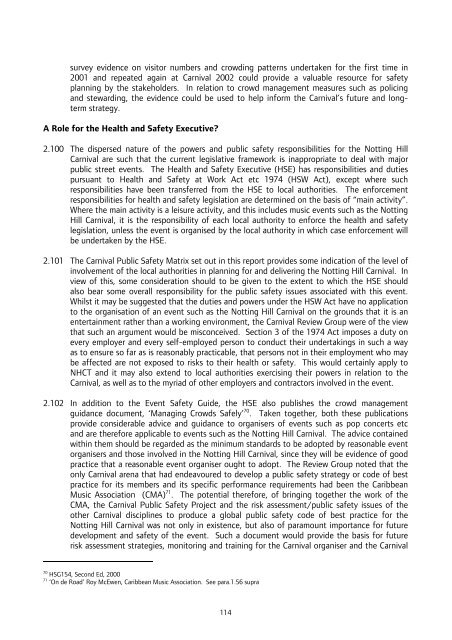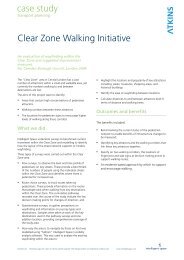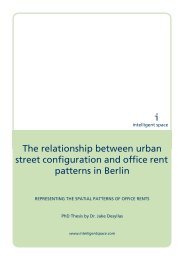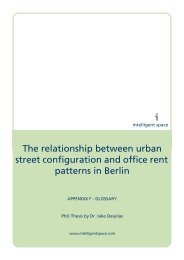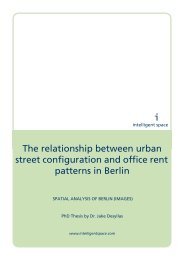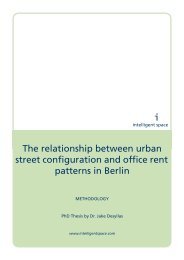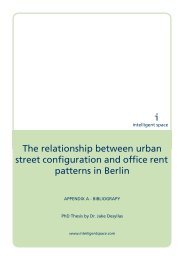Notting Hill Carnival Strategic Review - Intelligent Space
Notting Hill Carnival Strategic Review - Intelligent Space
Notting Hill Carnival Strategic Review - Intelligent Space
Create successful ePaper yourself
Turn your PDF publications into a flip-book with our unique Google optimized e-Paper software.
survey evidence on visitor numbers and crowding patterns undertaken for the first time in<br />
2001 and repeated again at <strong>Carnival</strong> 2002 could provide a valuable resource for safety<br />
planning by the stakeholders. In relation to crowd management measures such as policing<br />
and stewarding, the evidence could be used to help inform the <strong>Carnival</strong>’s future and longterm<br />
strategy.<br />
A Role for the Health and Safety Executive?<br />
2.100 The dispersed nature of the powers and public safety responsibilities for the <strong>Notting</strong> <strong>Hill</strong><br />
<strong>Carnival</strong> are such that the current legislative framework is inappropriate to deal with major<br />
public street events. The Health and Safety Executive (HSE) has responsibilities and duties<br />
pursuant to Health and Safety at Work Act etc 1974 (HSW Act), except where such<br />
responsibilities have been transferred from the HSE to local authorities. The enforcement<br />
responsibilities for health and safety legislation are determined on the basis of “main activity”.<br />
Where the main activity is a leisure activity, and this includes music events such as the <strong>Notting</strong><br />
<strong>Hill</strong> <strong>Carnival</strong>, it is the responsibility of each local authority to enforce the health and safety<br />
legislation, unless the event is organised by the local authority in which case enforcement will<br />
be undertaken by the HSE.<br />
2.101 The <strong>Carnival</strong> Public Safety Matrix set out in this report provides some indication of the level of<br />
involvement of the local authorities in planning for and delivering the <strong>Notting</strong> <strong>Hill</strong> <strong>Carnival</strong>. In<br />
view of this, some consideration should to be given to the extent to which the HSE should<br />
also bear some overall responsibility for the public safety issues associated with this event.<br />
Whilst it may be suggested that the duties and powers under the HSW Act have no application<br />
to the organisation of an event such as the <strong>Notting</strong> <strong>Hill</strong> <strong>Carnival</strong> on the grounds that it is an<br />
entertainment rather than a working environment, the <strong>Carnival</strong> <strong>Review</strong> Group were of the view<br />
that such an argument would be misconceived. Section 3 of the 1974 Act imposes a duty on<br />
every employer and every self-employed person to conduct their undertakings in such a way<br />
as to ensure so far as is reasonably practicable, that persons not in their employment who may<br />
be affected are not exposed to risks to their health or safety. This would certainly apply to<br />
NHCT and it may also extend to local authorities exercising their powers in relation to the<br />
<strong>Carnival</strong>, as well as to the myriad of other employers and contractors involved in the event.<br />
2.102 In addition to the Event Safety Guide, the HSE also publishes the crowd management<br />
guidance document, ‘Managing Crowds Safely’ 70 . Taken together, both these publications<br />
provide considerable advice and guidance to organisers of events such as pop concerts etc<br />
and are therefore applicable to events such as the <strong>Notting</strong> <strong>Hill</strong> <strong>Carnival</strong>. The advice contained<br />
within them should be regarded as the minimum standards to be adopted by reasonable event<br />
organisers and those involved in the <strong>Notting</strong> <strong>Hill</strong> <strong>Carnival</strong>, since they will be evidence of good<br />
practice that a reasonable event organiser ought to adopt. The <strong>Review</strong> Group noted that the<br />
only <strong>Carnival</strong> arena that had endeavoured to develop a public safety strategy or code of best<br />
practice for its members and its specific performance requirements had been the Caribbean<br />
Music Association (CMA) 71 . The potential therefore, of bringing together the work of the<br />
CMA, the <strong>Carnival</strong> Public Safety Project and the risk assessment/public safety issues of the<br />
other <strong>Carnival</strong> disciplines to produce a global public safety code of best practice for the<br />
<strong>Notting</strong> <strong>Hill</strong> <strong>Carnival</strong> was not only in existence, but also of paramount importance for future<br />
development and safety of the event. Such a document would provide the basis for future<br />
risk assessment strategies, monitoring and training for the <strong>Carnival</strong> organiser and the <strong>Carnival</strong><br />
70<br />
HSG154, Second Ed, 2000<br />
71<br />
‘On de Road’ Roy McEwen, Caribbean Music Association. See para.1.56 supra<br />
114


